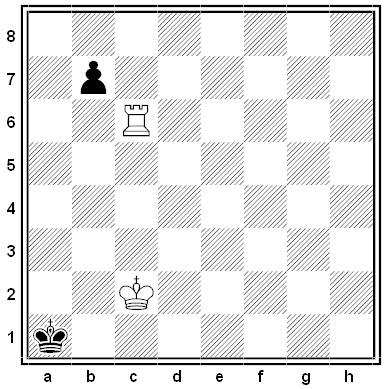Author: Greg Ross
Local Color
Unusual names recorded in the American South by University of Florida linguist Thomas Pyles, 1986:
- Oleander Lafayette Fitzgerald III
- Ed Ek
- Shellie Swilley
- Early Hawaiian McKinnon
- Sandy Gandy
- Earl Curl Jr.
- Percy Nursey
- Rev. Fay de Sha
- Lovie Slappey
- Esperanza Le Socke
- Pamela Gay Day
- Staff-Sgt. Mehogany Brewer
- Girlie Burns
- Fawn Grey Trawick Dunkle
- Alure Sweat
- Bloomer Bedenbaugh
- Martha Magdalene Toot
- Okla Bobo
- Melody Clinkenbeard
Cowboy Pink Williams served as lieutenant governor of Oklahoma from 1955 to 1959. And “The children of Mr. Stanford Bardwell, a realtor and a graduate of Louisiana State University, and his wife Loyola, are Stanford, Jr., Harvard, Princeton, Cornell, Auburn, and the twins Duke and T’lane. When the Bardwells go on holiday they travel in a specially equipped school bus called the ‘Collegiate Caravan.'”
(Thomas Pyles, “Bible Belt Onomastics or Some Curiosities of Anti-Pedobaptist Nomenclature,” in Names and Their Varieties, American Name Society, 1986.) See Roll Call and Pink Labels.
Better Late
A curious classified ad from the New York Herald, March 30, 1849:
Found, four dollars, while leaving the cars at Paterson, in the summer of 1845. The loser (or agent) is requested to identify, in some respect, and receive the amount with interest. Address, pre-paid, I Found, Lower Post Office, N. Y. city.
Sara Bader featured the ad in her 2005 collection Strange Red Cow. “We have no idea what motivated this advertiser, who apparently waited years before stepping forward to return this money.”
Batter Up!
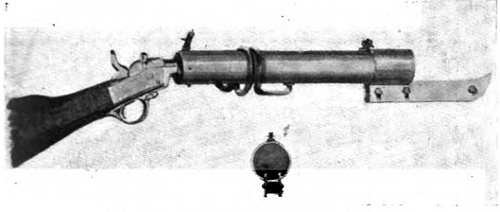
The first pitching machine was powered by gunpowder. Princeton mathematician Charles Hinton designed it for the school baseball team in 1897, hoping to spare human pitchers whose arms were giving out under the incessant demands of batting practice. At first he planned a catapult, but he found this too inaccurate. Then “it occurred to me that practically whenever men wished to impel a ball with velocity and precision, they drove it out of a tube with powder.”
The result, which he wrote up in Harper’s Weekly on March 20, was a shoulder-mounted cannon whose 4-foot barrel could send a ball across the home plate at 70 mph. With a fingerlike attachment it could even throw a curveball. That summer it pitched three innings in a game between two Princeton social clubs, allowing four hits, striking out eight batters, walking one, and throwing only one wild pitch.
The Washington Post predicted the end of the world (“There would be the base-burning, high-pressure, anti-friction catcher, and the shortstop made of aluminium and rivets and filled with cogs, cams, valves, shafts, and belting”), but Hinton praised the gun’s handiness: “It can be used so as to deliver ball after ball at the same speed in the same curve, or it can be varied from shot to shot, according to the wish or skill of the manipulator.” He took it with him to the University of Minnesota, where he worked until 1900.
In a Word
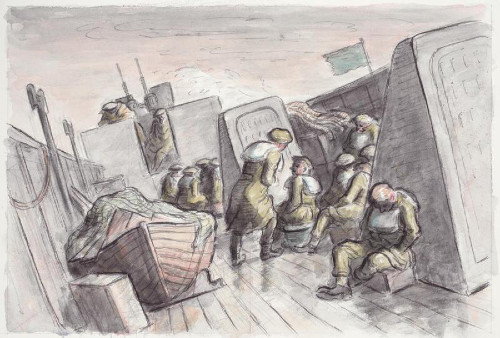
forwallowed
adj. wearied with tossing about
The Seventh Art Cinema

In the late 1990s, Frenchman Diynn Eadel set out to build an immense open-air movie theater in the desert near Sharm el-Sheikh, at the southern tip of the Sinai Peninsula. He arranged financing in Paris and installed projection equipment, 700 cinema seats, and a generator in the desert.
Unfortunately, the theater was shut down by Egyptian authorities before its planned opening in October 1997. The reasons aren’t clear. It was largely forgotten until Estonian photographer Kaupo Kikkas rediscovered it in 2014.
“Dynn Eadel with Seventh Art attempts to prove that tourism is not necessarily a destructive element and that The Great Theatre of Nature can reconcile us with the elements,” reads an old flyer for the project. “When will be the first Sinai International Film Festival?”
Roll Call
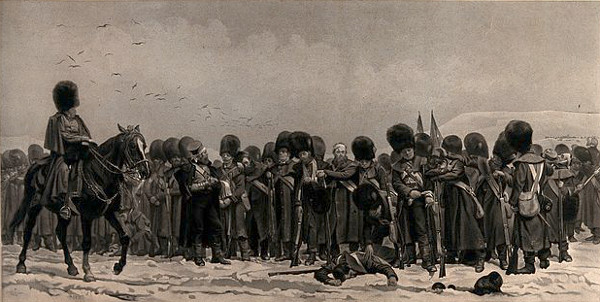
A problem from the 2002 Moscow Mathematical Olympiad:
A group of recruits stand in a line facing their corporal. They are, unfortunately, rather poorly trained: At the command “Left turn!”, some of them turn left, some turn right, and some turn to face away from the corporal. Is it always possible for the corporal to insert himself in the line so that an equal number of recruits are facing him on his left and on his right?
Tell Me, O Muse
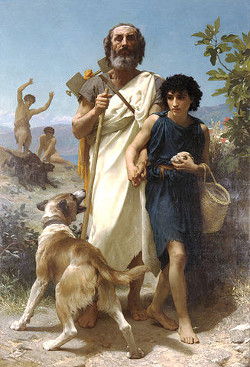
Samuel Butler believed Homer was “a very young woman” living in Sicily. In his 1897 book The Authoress of the Odyssey he argues that the events in the poem fit neatly onto the province of Trapani and its islands. And a careful reading of the action, he says, reveals “jealousy for the honour and dignity of woman, severity against those who have disgraced their sex, love of small religious observances, of preaching, of white lies and small play-acting, of having things both ways, and of money.”
I have touched briefly on all the more prominent female characters of the ‘Odyssey.’ The moral in every case seems to be that man knows very little, and cannot be trusted not to make a fool of himself even about the little that he does know, unless he has a woman at hand to tell him what he ought to do. There is not a single case in which a man comes to the rescue of female beauty in distress; it is invariably the other way about.
“Moreover there are many mistakes in the ‘Odyssey’ which a young woman might easily make, but which a man could hardly fall into — for example, making the wind whistle over the waves at the end of Book ii., thinking that a lamb could live on two pulls a day at a ewe that was already milked (ix. 244, 245, and 308, 309), believing a ship to have a rudder at both ends (ix. 483, 540), thinking that dry and well-seasoned timber can be cut from a growing tree (v. 240), [and] making a hawk while still on the wing tear its prey — a thing that no hawk can do (xv. 527).” He didn’t find many supporters, but Robert Graves took up the idea in his 1955 novel Homer’s Daughter.
Math Notes

(From Raymond F. Lausmann’s Fun With Figures, 1965.)
Podcast Episode 56: Lateral Thinking Puzzles

Here are six new lateral thinking puzzles to test your wits! Solve along with us as we explore some strange scenarios using only yes-or-no questions. Many were submitted by listeners, and most are based on real events.

